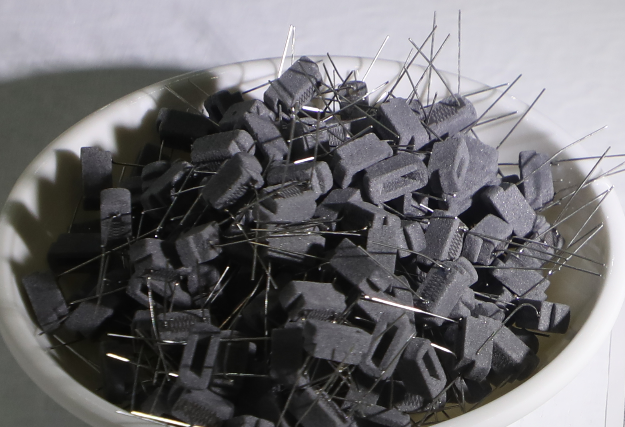Ceramic atomizer cores, as a type of electronic cigarette heating element, have been favored by many users in recent years and are one of the most common types of atomizer cores. They utilize the characteristics of ceramic materials to give electronic cigarettes a unique user experience.
I. Advantages of Ceramic Atomizer Coils
1. Better Taste: Ceramic atomizer coils generally offer a purer and smoother taste. Due to the heating properties of ceramic, they heat the e-liquid more evenly, resulting in a finer vapor. This is a clear advantage for users seeking a high-quality flavor.
2. Reduced Burnt Odor: Ceramic material remains stable at high temperatures and is less susceptible to burning than cotton wicks, thus reducing the occurrence of burnt odors during use.
3. Longer Lifespan: Ceramic atomizer coils offer high heat resistance and physical stability, making them less susceptible to e-liquid corrosion. Therefore, they generally have a longer lifespan than traditional cotton wicks.
II.Disadvantages of Ceramic Atomizer Coils
1. Longer Heating Time: Compared to cotton wicks, ceramic atomizer coils may take longer to reach the desired heating temperature.
2. Higher Cost: Due to the relatively high manufacturing cost and technical requirements of ceramic atomizer coils, their market price is generally higher than that of traditional cotton wicks.
3. Potentially Slower Flavor Delivery: Some users have reported that when switching between different e-liquid flavors with ceramic atomizer coils, the previous flavor may remain for a longer period of time, affecting the purity of the new flavor.

III. Ceramic Atomizer Core Production Process
This typically involves the following steps:
1. Raw Material Preparation:
Select high-purity ceramic powders suitable for atomization applications, such as alumina or zirconia, which have excellent thermal stability and corrosion resistance.
2. Slurry Preparation:
The ceramic powder is mixed evenly with an organic or inorganic binder and solvent to form a slurry with a certain degree of fluidity and plasticity. Other functional additives may also be added to the slurry to improve its conductivity, oil absorption, or porosity.
3. Molding Process:
The slurry is applied or filled into a specific mold using thick film printing, slip casting, dry pressing, injection molding, or other methods to form the basic shape and structure of the atomizer core, including the porous ceramic layer and heating element area.
4. Drying and Sintering:
After initial drying to remove most of the solvent, a high-temperature sintering process is performed to fuse and bond the ceramic particles, forming a dense ceramic body with a defined porosity.
5. Conductive Layer Deposition:
For atomizer cores that require heating, one or more layers of conductive material (such as metal film) are added to the sintered ceramic surface through methods such as sputtering, electroless plating, and screen printing to form a resistive heating layer.
6. Cutting and Packaging:
After the conductive layer is formed, the ceramic atomizer core is precisely cut according to design requirements to ensure that the dimensions meet the standard. The completed atomizer core is then packaged with external connectors, such as electrode pins and insulation material.
7. Quality Inspection:
Products undergo performance testing and quality control, including resistance testing, heating efficiency evaluation, stability testing, and inspection of oil absorption and atomization performance.
8. Packaging and Shipping:
Qualified products are treated with dust and static protection, packaged, and then stored for shipment to downstream e-cigarette manufacturers or other related industry customers.
Different manufacturers may adjust their specific production processes based on their own technology and market demands.
END
电子雾化与HNB产品都是新型电子产品,结构虽小,却融合应用多种材料、表面处理、芯片电子等技术工艺,而且雾化技术一直在不断更迭,供应链在逐步完善,为了促进供应链企业间有一个良好的对接交流,艾邦搭建产业微信群交流平台,欢迎加入;Vape e-cigarettes (VAPE) and Heat-Not-Burn e-cigarettes (HNB) are both emerging electronic products. Despite their compact size, they integrate various materials, surface treatment technologies, chip electronics, and other advanced technical processes. Moreover, atomization technology is constantly evolving and the supply chain is being progressively perfected. To facilitate good communication and networking among supply chain enterprises, Aibang has established an industry WeChat group communication platform and warmly welcomes interested enterprises to join.

